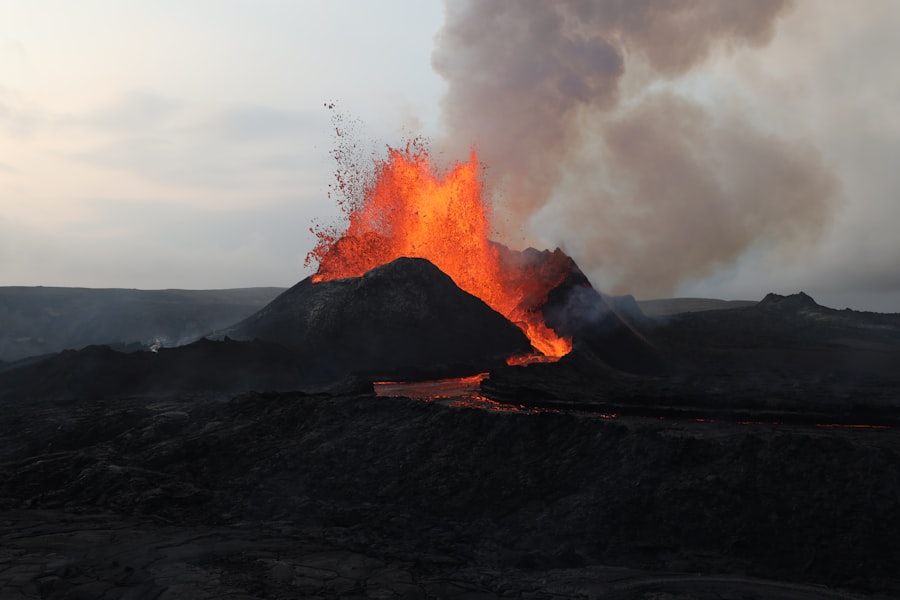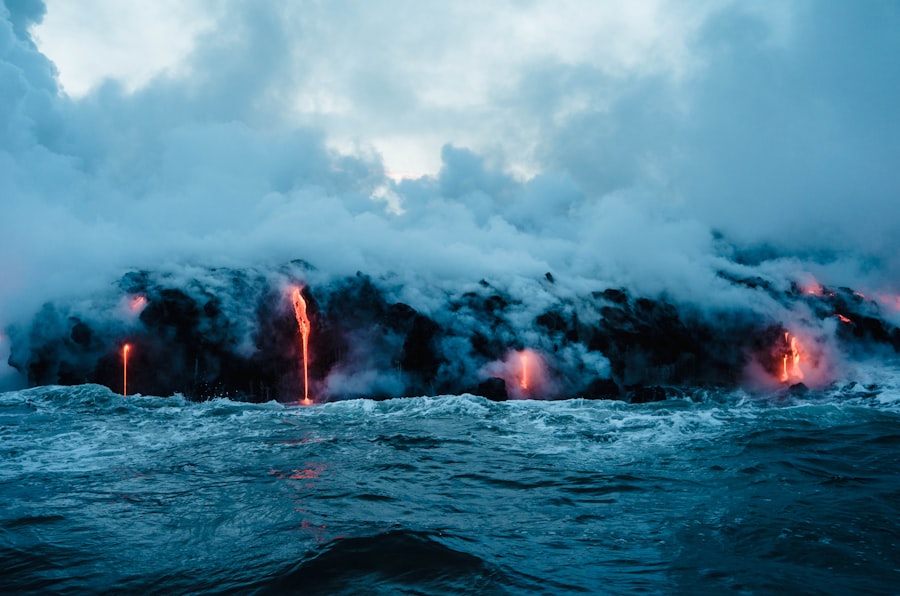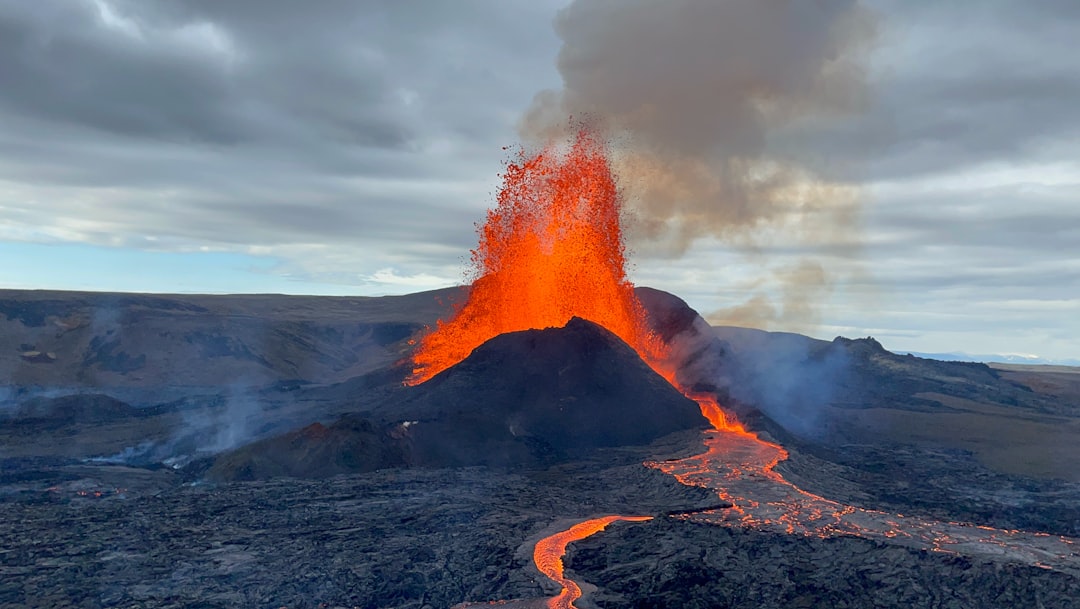The Drake Passage, a body of water that separates South America from Antarctica, is not only known for its treacherous waters and unpredictable weather but also for its geological wonders, including the recently discovered Drake Passage Volcano. This underwater volcano, lying beneath the surface of the frigid waters, has captured the attention of scientists and researchers alike. Its existence raises questions about the geological processes that shape our planet and the unique ecosystems that thrive in such extreme environments.
The volcano serves as a reminder of the dynamic nature of Earth’s crust and the hidden marvels that lie beneath the ocean’s surface. The Drake Passage Volcano is a significant geological feature that contributes to the understanding of volcanic activity in oceanic regions. Its discovery has opened new avenues for research into the processes that govern underwater volcanism and its implications for marine life.
As scientists delve deeper into the mysteries surrounding this volcano, they uncover not only its physical characteristics but also its potential impact on the surrounding environment and climate. The volcano stands as a testament to the Earth’s ever-changing landscape and the intricate relationships between geological phenomena and ecological systems.
Key Takeaways
- The Drake Passage Volcano is a newly discovered underwater volcano located in the remote Drake Passage, between South America’s Cape Horn and the South Shetland Islands of Antarctica.
- The volcano was discovered by a team of scientists using advanced sonar technology during a research expedition in the region.
- The geological significance of the volcano lies in its potential to provide valuable insights into the Earth’s tectonic activity and the formation of underwater volcanic structures.
- Unique ecosystems surrounding the volcano, including deep-sea corals and hydrothermal vent communities, have been found to thrive in the extreme conditions of the area.
- Research and exploration efforts are ongoing to further understand the volcano’s impact on climate and weather patterns, as well as to assess potential hazards and risks associated with its activity.
The Discovery of the Volcano
The discovery of the Drake Passage Volcano was a serendipitous event, emerging from a combination of advanced technology and dedicated research efforts. In recent years, scientists have employed sophisticated sonar mapping techniques to explore the ocean floor, revealing previously unknown geological formations. During one such expedition, researchers stumbled upon a massive underwater structure that was later identified as a volcano.
This finding was particularly exciting because it highlighted the potential for undiscovered geological features in remote oceanic regions. As news of the discovery spread, it sparked interest within the scientific community and beyond. Researchers began to investigate the volcano’s characteristics, including its size, shape, and activity level.
Initial studies indicated that the volcano was relatively young in geological terms, suggesting that it could still be active. This revelation prompted further exploration and analysis, as scientists sought to understand not only the volcano itself but also its implications for the surrounding marine ecosystem and global geological processes.
The Geological Significance of the Volcano

The Drake Passage Volcano holds considerable geological significance due to its location and formation. Situated at a tectonic boundary where the South American and Nazca plates converge, this underwater volcano provides valuable insights into plate tectonics and volcanic activity in oceanic settings. The study of such features helps geologists understand how tectonic movements contribute to volcanic eruptions and the formation of new landmasses over time.
Moreover, the volcano serves as a natural laboratory for studying hydrothermal systems and their role in shaping oceanic environments.
By examining the geological processes at play in the Drake Passage Volcano, scientists can gain a deeper understanding of how underwater volcanism affects ocean chemistry, sedimentation patterns, and even global climate systems.
Unique Ecosystems Surrounding the Volcano
| Ecosystem | Description | Unique Features |
|---|---|---|
| Tropical Rainforest | A dense forest with high rainfall and biodiversity | Home to rare species like the Quetzal bird |
| Cloud Forest | Moist, high-altitude forest with frequent cloud cover | Supports unique flora and fauna adapted to misty conditions |
| Volcanic Crater Lake | A lake formed in the crater of the volcano | Hosts endemic aquatic species adapted to volcanic environment |
The ecosystems surrounding the Drake Passage Volcano are as fascinating as the geological features themselves. The heat emitted from the volcano creates a unique environment that supports a diverse array of marine life. Hydrothermal vents, often found near volcanic activity, release nutrient-rich water that fosters the growth of specialized organisms adapted to extreme conditions.
These ecosystems are characterized by their resilience and ability to thrive in environments devoid of sunlight. Researchers have documented various species inhabiting these unique ecosystems, including tube worms, giant clams, and chemosynthetic bacteria. These organisms rely on chemosynthesis rather than photosynthesis for energy, utilizing chemicals released from the volcanic vents.
The discovery of such life forms challenges traditional notions of where life can exist on Earth and raises questions about potential life in similar extreme environments elsewhere in the universe.
Research and Exploration Efforts
In light of its significance, research and exploration efforts surrounding the Drake Passage Volcano have intensified. Multinational teams of scientists have embarked on expeditions to study its geological features and ecological impact. Utilizing advanced technologies such as remotely operated vehicles (ROVs) and autonomous underwater vehicles (AUVs), researchers can explore depths that were previously inaccessible, capturing high-resolution images and collecting samples for analysis.
These expeditions not only aim to map the volcano’s structure but also to monitor its activity levels. Understanding whether the volcano is dormant or active is crucial for assessing potential hazards associated with underwater eruptions. Additionally, researchers are investigating how volcanic activity influences local marine ecosystems, providing insights into broader ecological dynamics in oceanic environments.
The Volcano’s Impact on Climate and Weather Patterns

The Drake Passage Volcano’s influence extends beyond its immediate surroundings; it has potential implications for climate and weather patterns as well. Volcanic eruptions can release significant amounts of ash and gases into the atmosphere, affecting air quality and climate conditions over vast areas. While underwater eruptions may not have the same immediate impact as terrestrial ones, they can still contribute to changes in ocean chemistry and temperature.
The heat generated by volcanic activity can alter local ocean currents, which play a crucial role in regulating global climate systems. Changes in these currents can affect weather patterns far beyond the immediate vicinity of the volcano, influencing everything from precipitation levels to storm intensity. As researchers continue to study the Drake Passage Volcano, they aim to understand its role within larger climatic systems and how it may contribute to ongoing changes in global weather patterns.
Potential Hazards and Risks Associated with the Volcano
Despite its allure, the Drake Passage Volcano poses potential hazards that warrant careful consideration. Underwater volcanic eruptions can lead to tsunamis, which may have devastating effects on coastal communities if triggered by significant seismic activity. Additionally, volcanic gases released during eruptions can impact marine life and air quality in nearby regions.
Monitoring efforts are essential to assess any changes in volcanic activity that could signal an impending eruption. Scientists are working to establish early warning systems that can detect shifts in seismic patterns or gas emissions associated with volcanic unrest. By understanding these risks, researchers hope to mitigate potential hazards while continuing to explore the fascinating dynamics of this underwater volcano.
The Volcano’s Cultural and Historical Importance
The cultural and historical significance of the Drake Passage Volcano cannot be overlooked. Indigenous peoples of South America have long held deep connections to the land and sea, often weaving stories of natural phenomena into their cultural narratives. The presence of an underwater volcano adds another layer to these rich traditions, symbolizing both creation and destruction in their mythologies.
Furthermore, as explorers have navigated these waters throughout history, they have encountered tales of treacherous seas influenced by volcanic activity. The Drake Passage has been a critical route for maritime exploration and trade, with stories of shipwrecks and daring voyages echoing through time. Understanding the cultural context surrounding this geological feature enriches our appreciation for its significance beyond mere scientific inquiry.
Future Studies and Expeditions
Looking ahead, future studies and expeditions focused on the Drake Passage Volcano promise to yield exciting discoveries. As technology continues to advance, researchers will be able to conduct more comprehensive surveys of this underwater marvel. Plans for long-term monitoring programs are underway to track changes in volcanic activity and assess their ecological impacts over time.
Collaborative efforts among international research teams will be crucial in maximizing resources and expertise. By pooling knowledge from various disciplines—geology, marine biology, climatology—scientists can develop a holistic understanding of how this volcano interacts with its environment. Future expeditions may also explore adjacent areas within the Drake Passage, uncovering additional geological features that could further illuminate our understanding of underwater volcanism.
Conservation and Protection of the Volcano
As awareness grows regarding the significance of the Drake Passage Volcano, so too does the need for conservation efforts aimed at protecting this unique environment. The delicate ecosystems surrounding underwater volcanoes are vulnerable to human activities such as fishing, shipping traffic, and climate change.
Conservation initiatives must involve collaboration between governments, scientists, and local communities to ensure sustainable practices are implemented. By promoting awareness about the importance of preserving these ecosystems, stakeholders can work together to mitigate threats posed by human activities while fostering a sense of stewardship over this remarkable geological feature.
The Drake Passage Volcano’s Connection to the Ring of Fire
The Drake Passage Volcano is intricately connected to the broader geological phenomenon known as the Ring of Fire—a horseshoe-shaped zone encircling the Pacific Ocean characterized by high volcanic activity and frequent earthquakes. This connection underscores its significance within global tectonic processes and highlights how interconnected Earth’s geological systems truly are. As part of this dynamic region, the Drake Passage Volcano contributes to our understanding of subduction zones where tectonic plates collide and interact.
Studying this volcano provides insights into not only local geological processes but also broader patterns of volcanism that shape our planet’s landscape over millions of years. By examining its relationship with other volcanic features along the Ring of Fire, scientists can piece together a more comprehensive picture of Earth’s geological history. In conclusion, the Drake Passage Volcano stands as a remarkable testament to Earth’s dynamic nature—a hidden gem beneath turbulent waters that offers insights into geology, ecology, climate science, culture, and conservation efforts alike.
As research continues to unfold around this underwater marvel, it promises to deepen humanity’s understanding of our planet while inspiring future generations to explore its wonders responsibly.
The Drake Passage, a significant body of water connecting the Atlantic and Pacific Oceans, is not only known for its turbulent waters but also for its geological activity, including underwater volcanoes. For those interested in exploring more about the geological features and volcanic activity in this region, a related article can be found on MyGeoQuest. This article delves into the fascinating aspects of the Drake Passage and its volcanic phenomena. To read more about it, visit the
